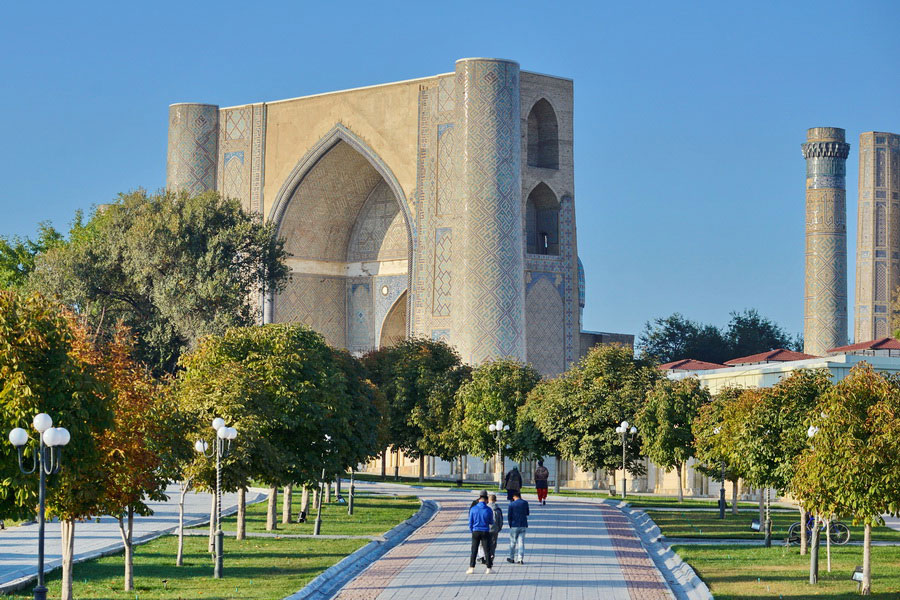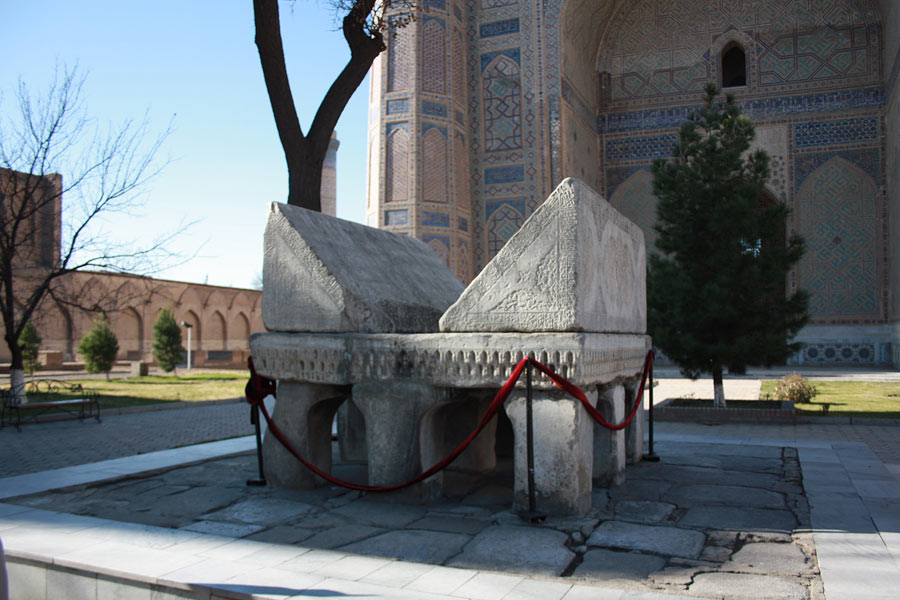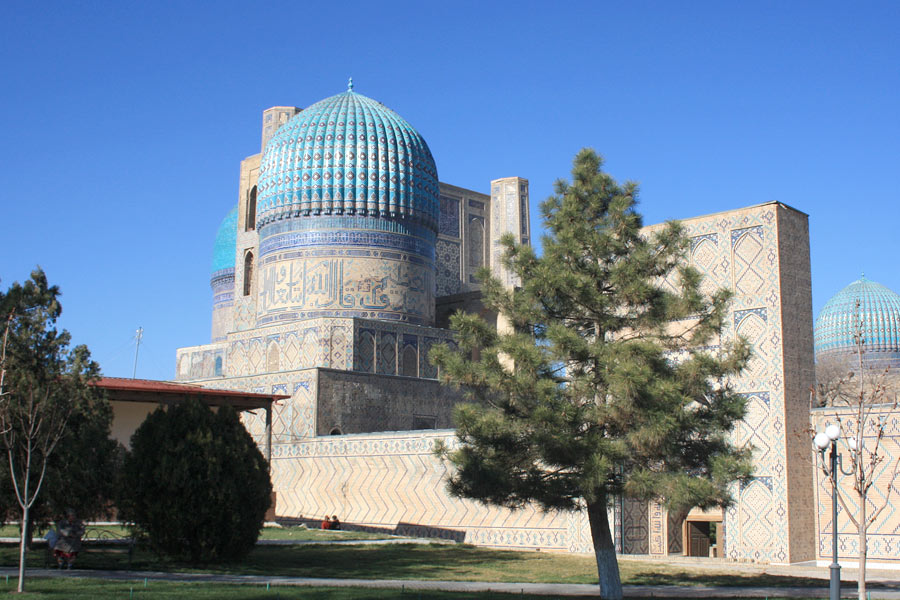Bibi Khanum Mausoleum
Bibi Khanum Mausoleum is located in Samarkand very close to the mosque of the same name. This architectural monument belongs to the whole ensemble of tombs in the Uzbek city.
Historians claim that the mausoleum was part of a madrasa (an educational institution for the training of Muslim ministers), which was supposedly connected by a long tunnel. Such conclusions were drawn based on the appearance of the tomb — the building lacks a main facade. Supporters of another version claim that the mausoleum of Bibi Khanum could well have been an independent building.
The history of the construction of the Bibi Khanum Mausoleum
The building was erected by Tamerlane for his wife, her mother and several other Timurid women. The construction of this ornate mausoleum lasted five years and was completed in 1404.
It is believed that the mother of the emir's wife was buried there first, and later the remains of Bibi Khanum herself (aka Sarai Mulk Khanim) were buried here. Although the researchers have not found any evidence of this fact, folk legend connects the tomb with the main wife of the legendary Tamerlane. There are reasons for this: Bibi Khanum was quite beautiful, intelligent and educated, and the great conqueror trusted her alone of all his wives.
The marble sarcophagi were discovered during the restoration work, which was preceded by the earthquake of 1875. And 66 years later, anthropologist Mikhail Gerasimov was able to enter the ruins of the mausoleum. There he found two sarcophagi with expensive finishes, which contained the remains of female bodies. There were traces of skin on one skeleton in the abdominal area, and remnants of hair could be seen on the skull. From what was left of the young woman, the anthropologist managed to make an approximate portrait of Bibi Khanum. Today it can be seen by visiting this mausoleum.
After all the remains were thoroughly examined, the skeleton was returned to the sarcophagus, and an act of work done was placed next to it.
Due to the fact that the landmark is located in a seismically active zone, it, like other buildings of the complex, has repeatedly suffered from earthquakes. For a long time, the condition of the tomb was very deplorable. In 2000, by decree of the first President of Uzbekistan, the historical monument underwent reconstruction. The restoration work, which was fully completed in 2003, made the Bibi Khanum mausoleum more attractive to tourists and at the same time preserved its former architectural appearance.





















